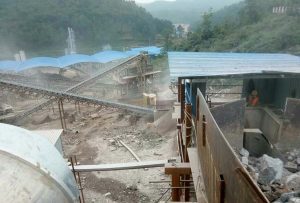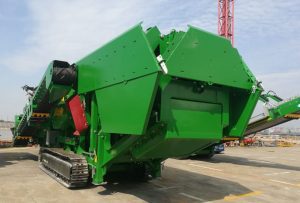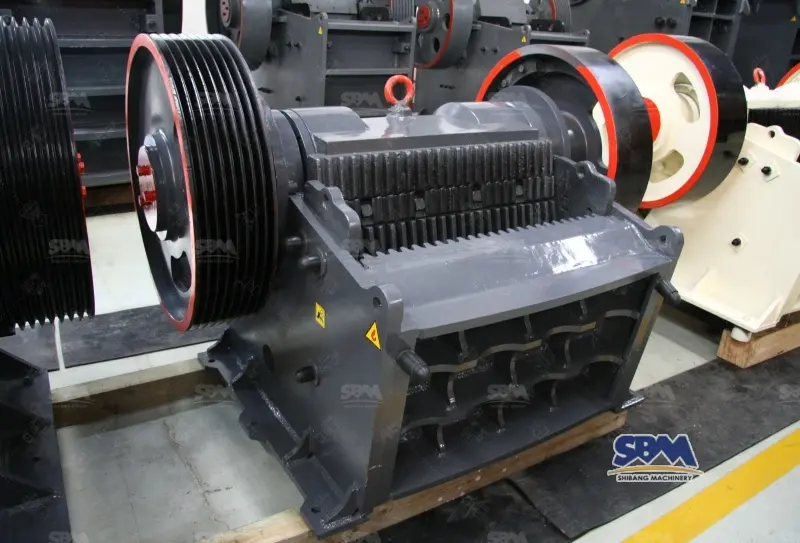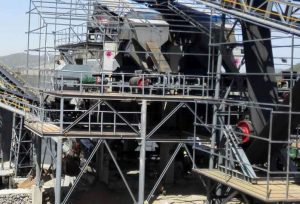Correo electrónico: [email protected]
Optimizar el proceso de detección y aplastamiento del mineral de hierro | Guía de eficiencia
Mineral de hierro: el crudo, poderoso columna vertebral de la industria moderna. Transformamos este ingrediente esencial en el acero que da forma a nuestro mundo. Pero antes de que alimente los blastas, se sufre una transformación vital: el Proceso de aplastamiento y detección de mineral de hierro. Más que simplemente fracturando roca, Esta secuencia esencial se dirige a la precisión, eficiencia de trituracion, y liberar el valor potencial total del mineral. Vamos a sumergirnos en cómo funciona este viaje crítico de procesamiento de minerales y cómo optimizarlo.
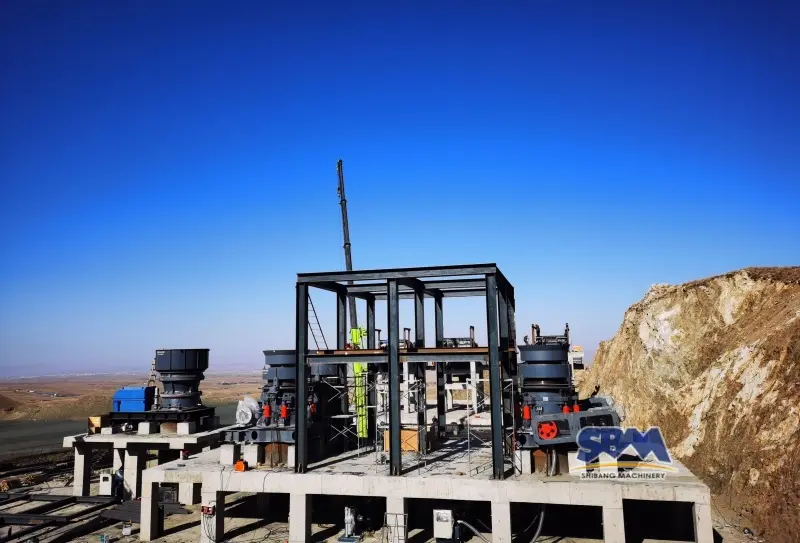
Por qué es importante aplastar y detectar el mineral de hierro
Honestamente, El mineral de hierro crudo directamente de la mina rara vez está listo para su papel protagonista. Viene en masivo, trozos irregulares mezclados con roca residual (banda). Trituración y detección actúa como una llave maestra, Reducir sistemáticamente el tamaño y separar meticulosamente el mineral valioso del material menos útil. Los objetivos son claros:
- Reducción de tamaño: Obtenga el mineral a un tamaño de partícula adecuado para la siguiente etapa (como beneficio o envío directo).
- Liberación: Desglose el mineral para que los minerales de hierro se separen de los Minerales Gangue.
- Clasificación: Partículas de grupo por tamaño a través de poner en pantalla, Asegurar que cada proceso posterior sea precisamente lo que necesita.
- Eficiencia: Maximizar el rendimiento y el rendimiento mientras minimiza el uso de energía y los desechos. Contiendo esto proceso Derecho impacta directamente el resultado final: es donde realmente comienza la excelencia operativa.
El proceso de criticación y detección de mineral de hierro: Paso a paso
Imagine la coordinación diseñada por precisión de la maquinaria colosal. Así es como un típico planta de procesamiento de mineral de hierro aborda la tarea:
1. Trituración Primaria: El primer descanso
- Meta: Reducir el mineral masivo de mina (a veces sobre 1 metro!) hasta los trozos manejables (alrededor de 150-300 mm).
- El caballo de batalla: Los trituradores de la mandíbula de servicio pesado o los trituradores giratorios son los héroes aquí. Usan una fuerza de compresión inmensa para romper el mineral como una tuerca. Piense en ellos como el poderoso primer golpe. La fiabilidad no es negociable en esta etapa: el tiempo de inactividad aquí detiene todo.
2. Cribado primario: El tipo inicial
- Meta: Eliminar el material fino ya al tamaño deseado (“escala”) y material de gran tamaño separado que necesita más trituración.
- La herramienta: Pantallas vibratorias robustas (como pantallas de escala). Material de gran tamaño regresa para más triturador, mientras que las multas de tamaño correcto podrían evitar la siguiente etapa. Este paso es crucial para optimizar la carga en trituradoras secundarias y aumentar en generaleficiencia de la planta.
3. Trituración Secundaria: Refinar el tamaño
- Meta: Tome el mineral triturado primario y reduzca más (a menudo a 30-60 mm).
- El caballo de batalla: Las trituradoras de cono brillan aquí. Operan a velocidades más altas que las primarias, Usar un manto girando dentro de un tazón cóncavo para aplastar el mineral por compresión e impacto. Entregan un tamaño de producto más uniforme, Lo cual es una noticia fantástica para las etapas de proyección por delante.
4. Cribado secundario: Dimensionamiento de precisión
- Meta: Dividir el material aplastado secundario en fracciones de tamaño específico. Aquí es donde el proceso de detección se vuelve preciso.
- La herramienta: Las pantallas vibratorias de múltiples pisos son comunes. Cada mazo tiene pantallas con diferentes tamaños de apertura. Top Deck atrapa material de gran tamaño (enviado de regreso al aplastamiento secundario), Las cubiertas intermedias capturan un valioso producto mediano, Y la cubierta inferior deja pasar las multas. Obtener separación limpia aquí es vital para la calidad del producto.
5. Trituración terciaria (Si es necesario): El toque final
- Meta: Para aplicaciones que exigen muy específicas, tamaños más finos (como alimento para pellets), Se podría emplear una tercera etapa de aplastamiento.
- El caballo de batalla: trituradoras de cono (a menudo configuraciones más finas) o rollos de molienda de alta presión (HPGR) se puede usar. Los HPGR están ganando popularidad por su eficiencia energética y su capacidad para producir partículas más fracturadas, ayudar a la liberación.
6. Detección final: Entregando los bienes
- Meta: Asegúrese de que el producto triturado final cumpla con las especificaciones de tamaño exacto antes de pasar a beneficios o envíos.
- La herramienta: Equipo de detección fino (P.EJ., pantallas de alta frecuencia). Este punto de control de control de calidad final garantiza que el mineral esté perfectamente preparado para su próximo paso transformador. Ver esa acumulación de productos perfectamente graduado es realmente satisfactorio!
Contenido relacionado: IRon Tailings Sand Making Plant
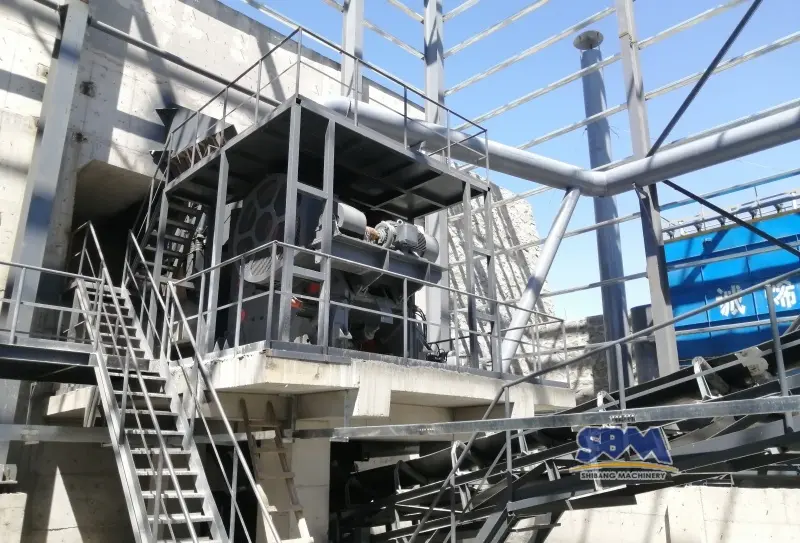
Elegir el equipo correcto: El corazón de la eficiencia
Su elección de trituradoras y pantallas afecta drásticamente el éxito de suCircuito de aplastamiento y cribado de mineral de hierro. Considerar:
- Características de mineral: Dureza, abrasividad, contenido de humedad, y la distribución del tamaño de la alimentación son rey. Duro, El mineral abrasivo exige trituradores increíblemente robustos y revestimientos resistentes al desgaste.
- Tamaño del producto deseado & Capacidad: Que bien lo necesitas? Cuantos toneladas por hora (HTP) ¿Debes procesar? Esto dicta el tipo de trituradora, tamaño, y área de pantalla.
- Diseño de la planta & Movilidad: Planta fija? Semi-motor? Totalmente móvil? Cada uno tiene su lugar dependiendo de la vida de la mina y la logística. Plantas móviles de trituración y detección Ofrecer una flexibilidad increíble para los depósitos satelitales.
- Tecnología: Las trituradoras modernas ofrecen automatización avanzada para productos consistentes y operación optimizada. Las pantallas con diseños de mazos innovadores mejoran la eficiencia y reducen el cegamiento (Cuando el material húmedo obstruye las pantallas: un dolor de cabeza real!).
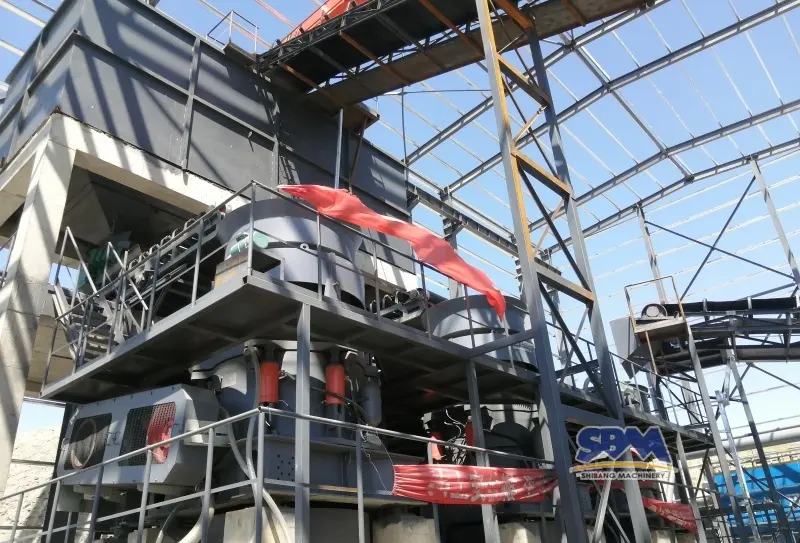
Optimización de su flujo de procesamiento de mineral de hierro
Más allá de la maquinaria, Lograr el rendimiento máximo en elProceso de reducción y clasificación del tamaño del mineral de hierro imponer:
- Mantenimiento regular: En serio, No escatimes aquí. Cheques programados en los revestimientos de trituradores, malla de pantalla, aspectos, y los transportadores evitan fallas catastróficas. El tiempo de inactividad es el enemigo de las ganancias.
- Control de alimentación: La velocidad y el tamaño de alimentación consistentes en la trituradora primaria es primordial. Las montones o los alimentadores de sobretensión ayudan a suavizar las cosas.
- Diseño de flujo de material: Minimizar los puntos de transferencia, Asegúrese de un diseño de canales adecuado para reducir el desgaste y el polvo, y optimizar los ángulos transportadores. Un flujo bien diseñado se siente casi sin esfuerzo.
- Supresión de polvo: El trituración genera polvo, mucho. Sistemas de supresión efectivos (aerosoles de agua, coleccionistas de polvo) son esenciales para el cumplimiento ambiental y la salud de los trabajadores. Es simplemente operación responsable.
- Escucha & Control: Use sensores y automatización para rastrear los parámetros de clave (sorteo, presión, nivel) y hacer ajustes en tiempo real. Los datos son potencia!
Dominar la base
El Proceso de aplastamiento y detección de mineral de hierro es más que solo fuerza bruta; Es el primer acto esencial para transformar la Tierra en bruto en el progreso industrial.. Comprender las etapas - aplastamiento primario, poner en pantalla, aplastante secundario, Más proyección, y trituración potencialmente terciaria e invertir en la derecha, equipo robusto (como el trituradoras de alta capacidad y pantallas eficientes ofrecidas por líderes como SBM) es fundamental. Optimizando esto Circuito de trituración mineral para la eficiencia, calidad del producto, y confiabilidad, Las operaciones mineras establecen la base más sólida posible para el éxito posterior. Es realmente impresionante presenciar cómo estas poderosas máquinas funcionan en concierto para desbloquear el potencial oculto dentro de cada tonelada de mineral..
Oficina central
Whatsapp:+8615225176731
Correo electrónico: [email protected]
DIRECCIÓN: No. 1688, Camino del este de Gaoke, Nuevo distrito de Pudong, Llevar a la fuerza, Porcelana.
Sitio web: https://www.mill-sbm.com/

